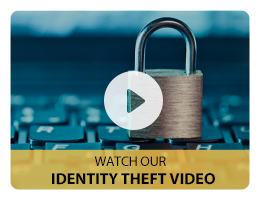Find valuable insights and resources so you can keep your sensitive information safe.
Fraud is a common crime that can cost you a significant amount of money, time and anxiety. Criminals can steal your personal information to access your bank accounts, obtain loans, make purchases, rent an apartment in your name, get a job, get medical services and use your identity for any number of other purposes. The key is to know what to look for, how to protect yourself and how to avoid the traps. Cornhusker Bank is here for you. Keep the following information in mind and use these resources to secure your accounts.
Cornhusker Bank and our fraud partners will NEVER ask you to provide your card’s PIN or security code (CVV code) located on the back of the card. Our alerts will ask about the suspicious transaction(s) in question, and you won’t need to provide any further sensitive information. We take protecting your financial information seriously. If you’re not sure that a call or text is from us, please hang up immediately and contact our Customer Engagement Team at (402) 434-2265.


